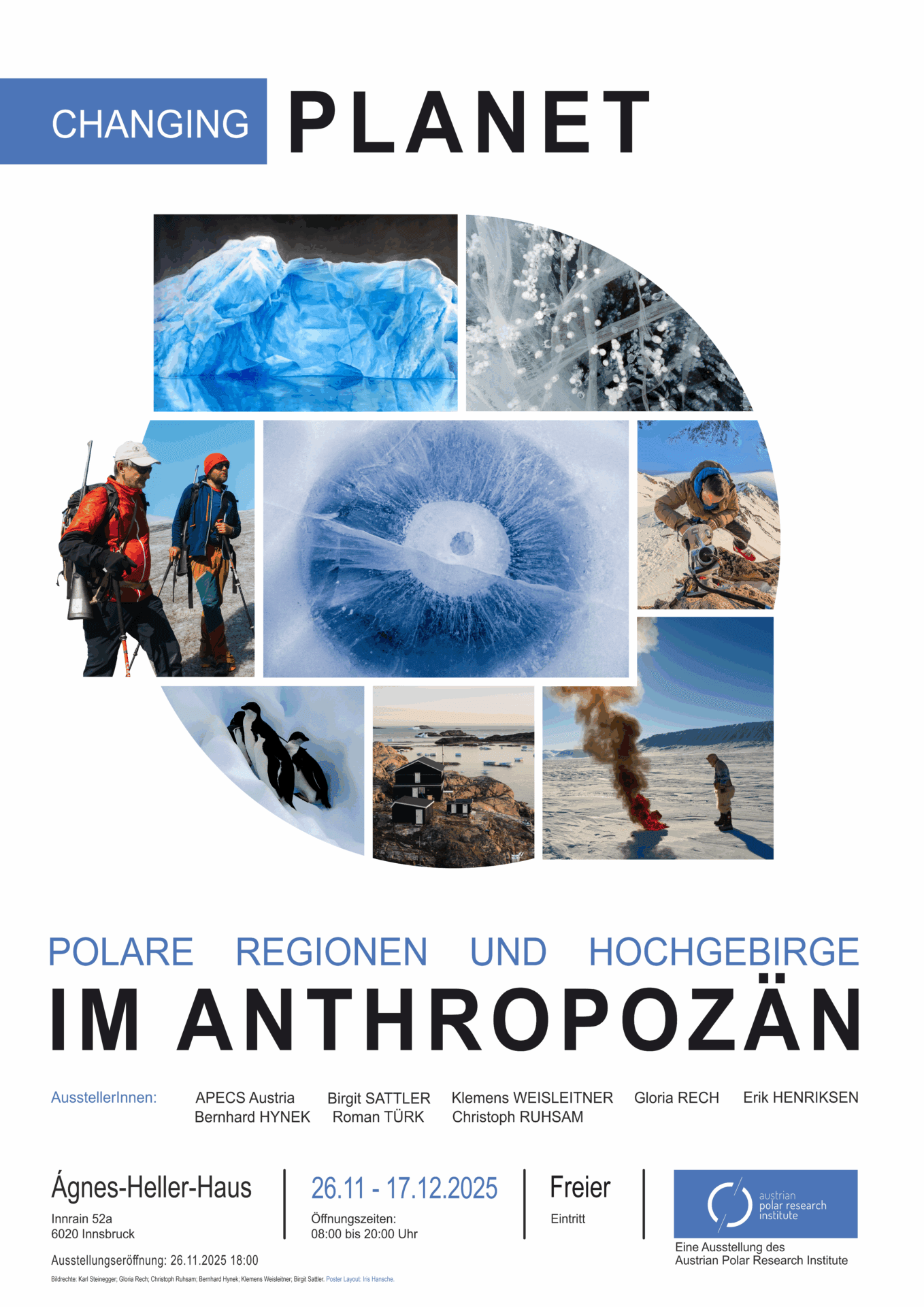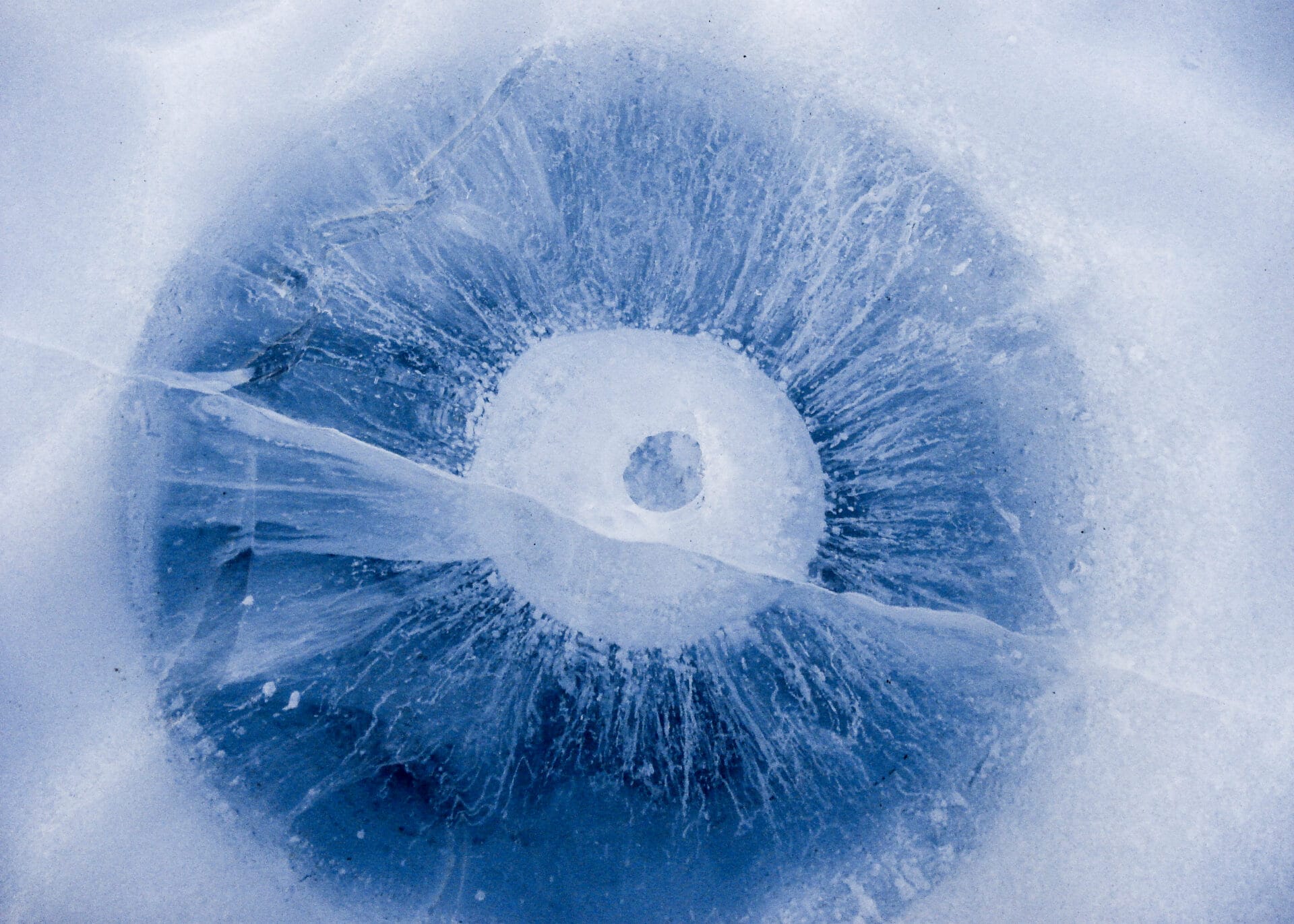Art meets science – The Austrian Polar Research Institute invites you to an exhibition dedicated to glacier protection
26.11. till 17.12.2025, Agnes Heller Haus, Innrain 52a, Innsbruck
In the International Year of Glacier Preservation, the Austrian Polar Research Institute (APRI) is focusing on the importance of Austrian polar research and its global contributions to the understanding of sensitive regions. Researchers and artists from the Austrian Polar Research Institute present their experiences and perspectives on the effects of the Anthropocene on the polar regions and high mountains. The exhibition features artistic representations, impressive macro photographs of ice structures and research equipment used in the Arctic and Antarctic. The aim is to reveal the magic, but also the vulnerability, of ice and to raise awareness of the global impact of glacier melt.










